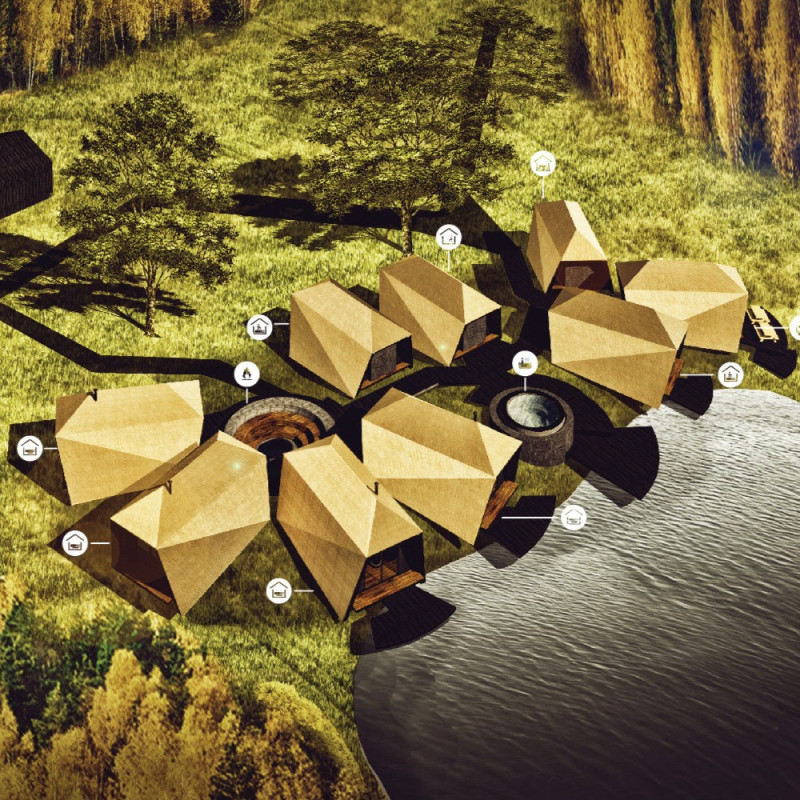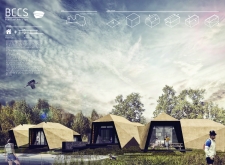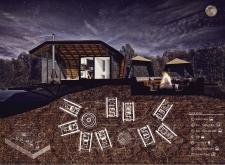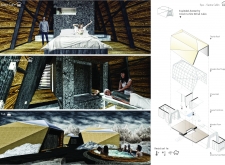5 key facts about this project
The primary function of the BCCS is to serve as a wellness destination, providing various amenities such as guest cabins, spa facilities, and communal areas for social interaction. Each component is designed with specific purposes in mind, enhancing the overall experience for visitors seeking respite from daily pressures. The guest cabins are thoughtfully positioned to ensure privacy while fostering a sense of community through shared spaces like the central courtyard, which features a fire pit and encourages gatherings.
An essential aspect of the BCCS is its commitment to sustainability. The project employs a range of materials that reflect local building traditions while offering energy efficiency and environmental compatibility. Key materials used include wood, stone, thatch, and glass. Wood serves as the primary structural element, creating warmth and connection to the local context. Stone is incorporated into the design, offering durability and a thermal mass that contributes to indoor climate regulation. Thatch, utilized for roofing, pays homage to historical practices, while glass elements provide transparency that connects indoor spaces with the lush outdoors, enhancing user engagement with nature.
The layout of the project emphasizes functionality while maintaining an organic flow that mirrors the natural landscape. The arrangement of different cabin types—guest cabins, spa and sauna facilities, and communal areas—ensures that the experience caters to various needs, from solitude to socializing. This thoughtful organization allows visitors to immerse themselves fully in both individual wellness journeys and shared community experiences.
Unique design approaches within the BCCS include a focus on biomimicry in architectural forms, drawing inspiration from the natural environment. The forms of the cabins and communal areas may reflect the organic shapes of the surrounding landscape, creating a visual and experiential continuity that encourages visitors to appreciate their surroundings. This approach not only enhances the aesthetic appeal but also provides meaningful connections to the site's ecology and geography.
The design also prioritizes natural light and ventilation, with strategically placed windows and openings that allow for ample daylight and fresh air, contributing to a healthy indoor environment. This integration of passive design strategies helps to reduce reliance on artificial heating and cooling systems, further promoting the sustainability goals of the project.
As visitors engage with the BCCS, they will find a space that thoughtfully combines functionality, sustainability, and aesthetic richness. The project does not merely serve as a place to stay; it offers an immersive experience in wellness tourism that deeply respects and reflects the local context. The attention to detail in architectural elements, such as the choice of materials and the harmony of forms, showcases an understanding of how architecture can enhance the well-being of its users.
To gain deeper insights into the Blue Clay Country Spa project, readers are encouraged to explore the architectural plans, sections, designs, and ideas that articulate its comprehensive vision. These elements provide a thorough understanding of the project’s thoughtful approach to creating a well-integrated space designed for relaxation and rejuvenation.


























